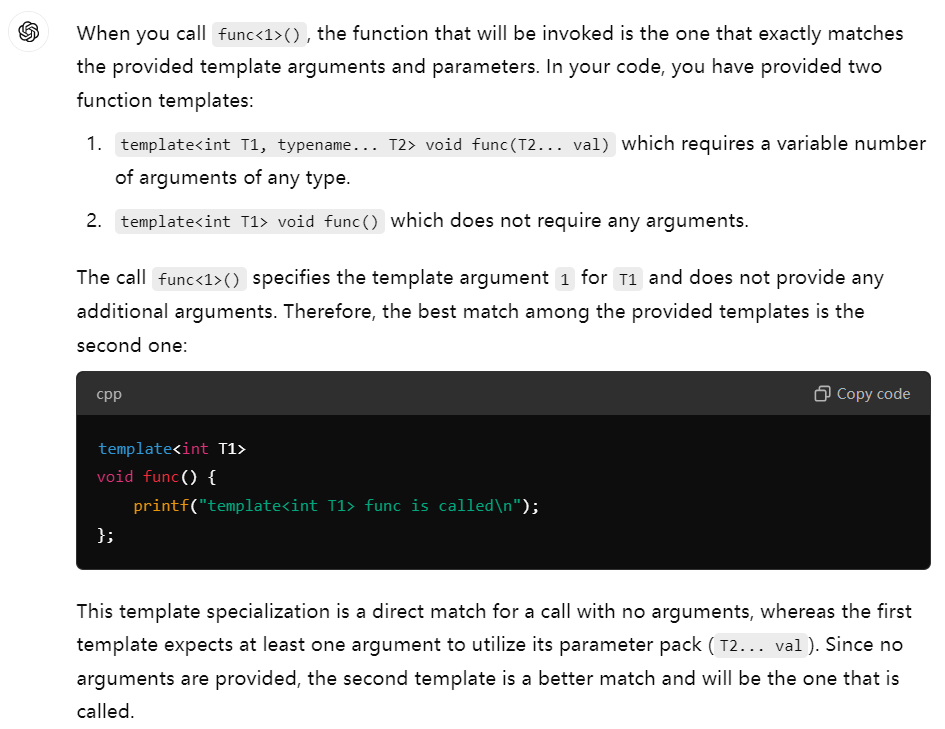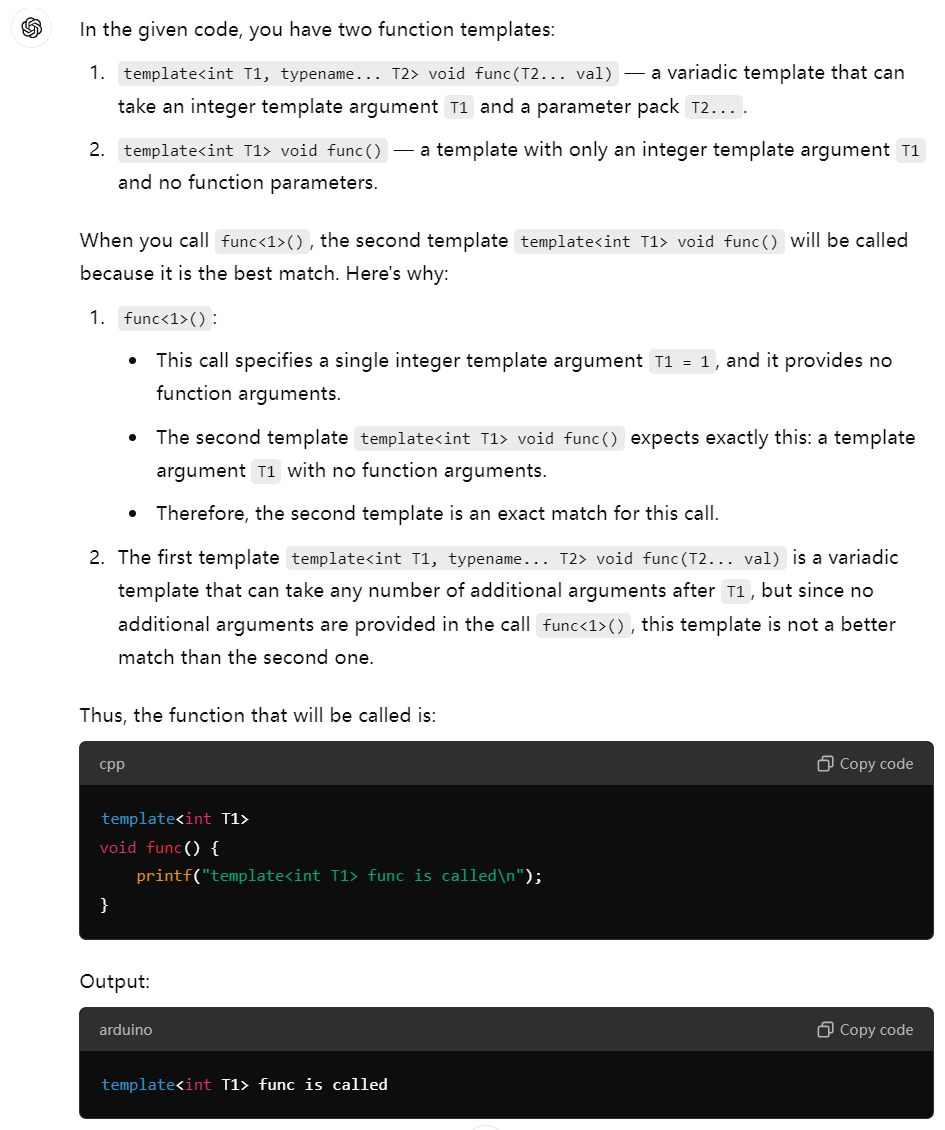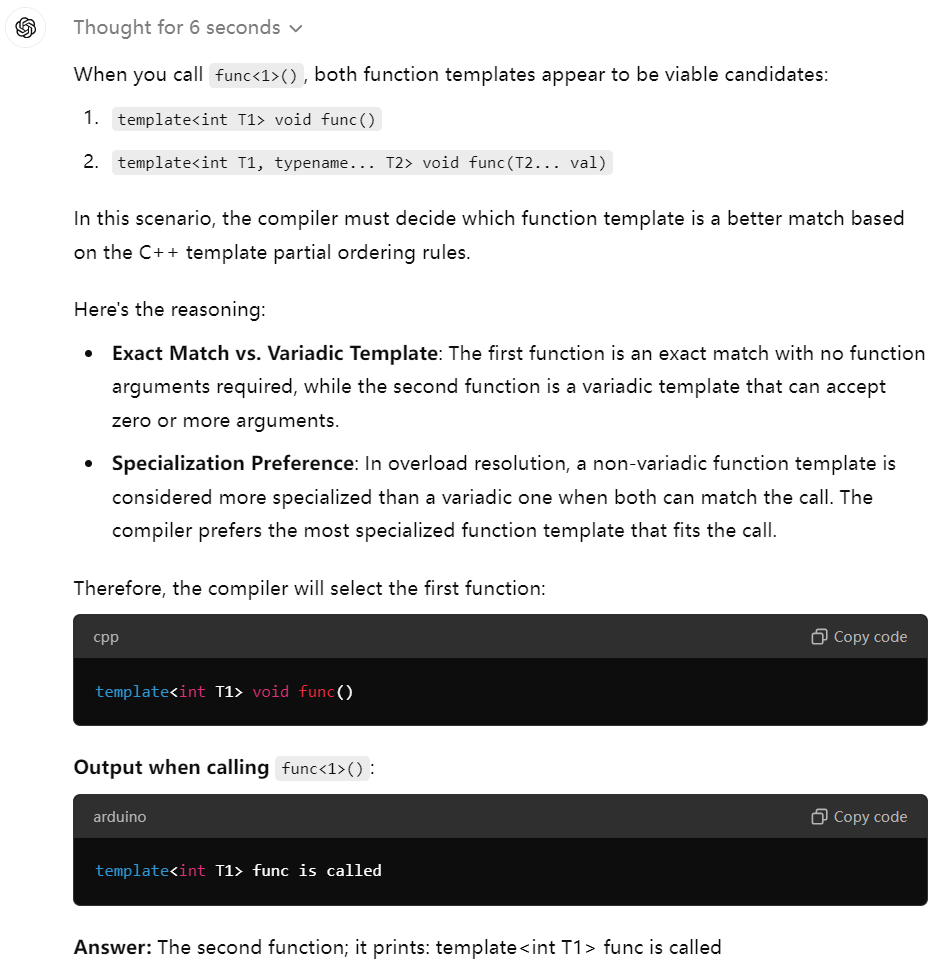ChatGPT 模型对比
对比 ChatGPT 4, ChatGPT 4o, ChatGPT o1-preview
template<int T1, typename... T2>
void func(T2... val) {
printf("template<int T1, typename... T2> func is called\n");
}
template<int T1>
void func() {
printf("template<int T1> func is called\n");
};which function will be called in func<1>()
ChatGPT 4

ChatGPT 4o

ChatGPT o1-preview

结论
这个问题涉及到两个概念:可变参数模板(Variadic template)和 Function Template Partial Ordering。
函数1 使用了 Variadic template,由于可变参数模板可以接受大于等于0个参数,因此 函数1 和 函数2 都可以特化到 func<1>()
Function Template Partial Ordering 表示如果多个模板均可以特化到一个实例,那么编译器会尝试给这些模板排一个偏序,并选择最为特殊的模板进行特化。
排偏序的方式是,对于模板A,B,如果A可以特化到B,但B不能特化到A,则认为B更为特殊。由于不是任意两个模板都可比,因此形成了偏序。
在这个问题中,函数1 可以特化到 函数2,但 函数2 不能特化到 函数1,因此 函数2 更为特殊。
因此对于这个问题,最终 func<1>() 应该特化到 函数2。
ChatGPT 4 认为 函数1 必须接受至少一个参数(其实可以接受0个参数),既没有提到 Variadic template 概念,也没有考虑 Function Template Partial Ordering。
ChatGPT 4o 考虑到了 Variadic template,但没有考虑 Function Template Partial Ordering。
ChatGPT o1-preview 同时考虑到了 Variadic template 和 Function Template Partial Ordering。
因此虽然三个模型都得到了正确答案,但从性能上 ChatGPT o1-preview > ChatGPT 4o > ChatGPT 4